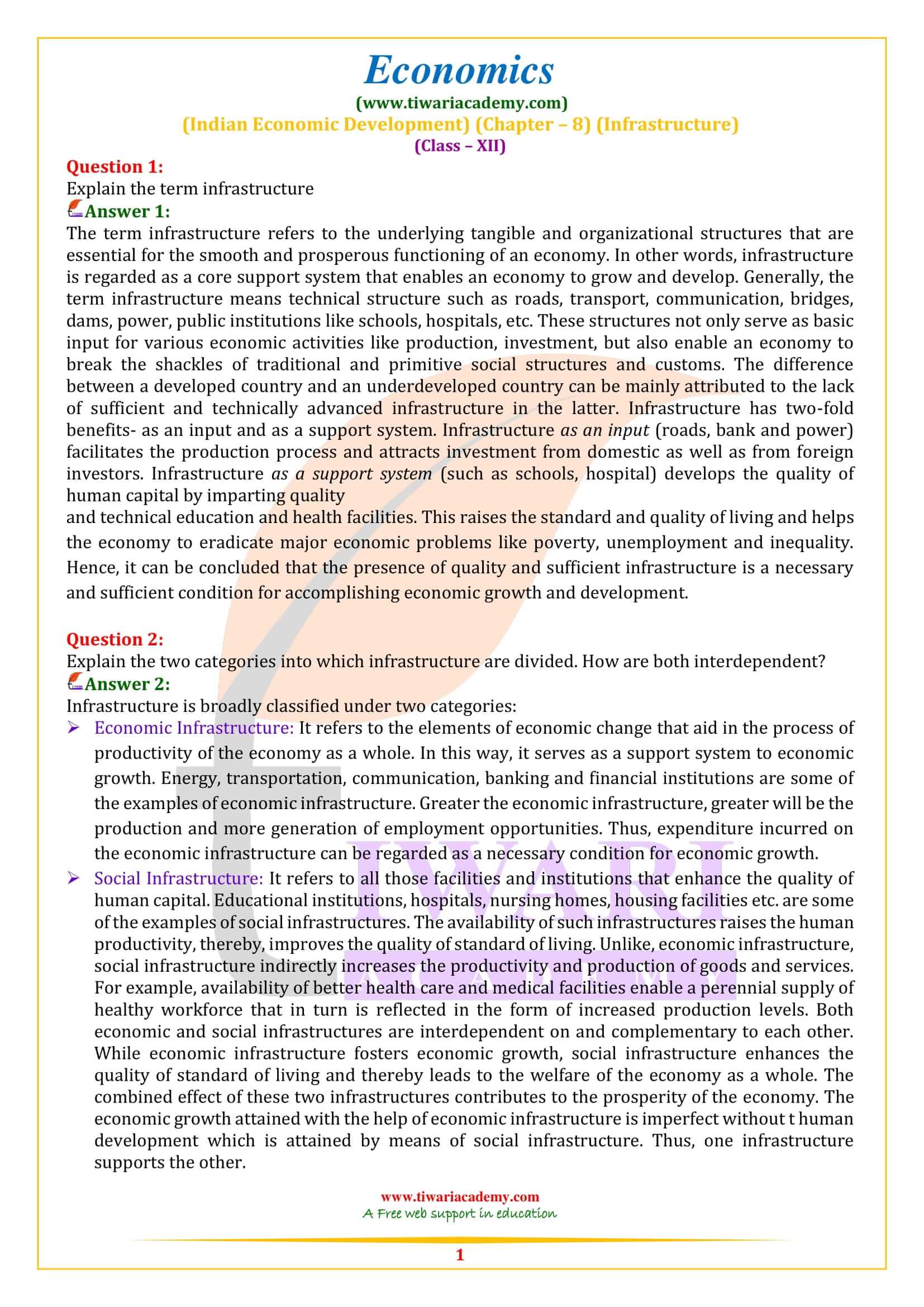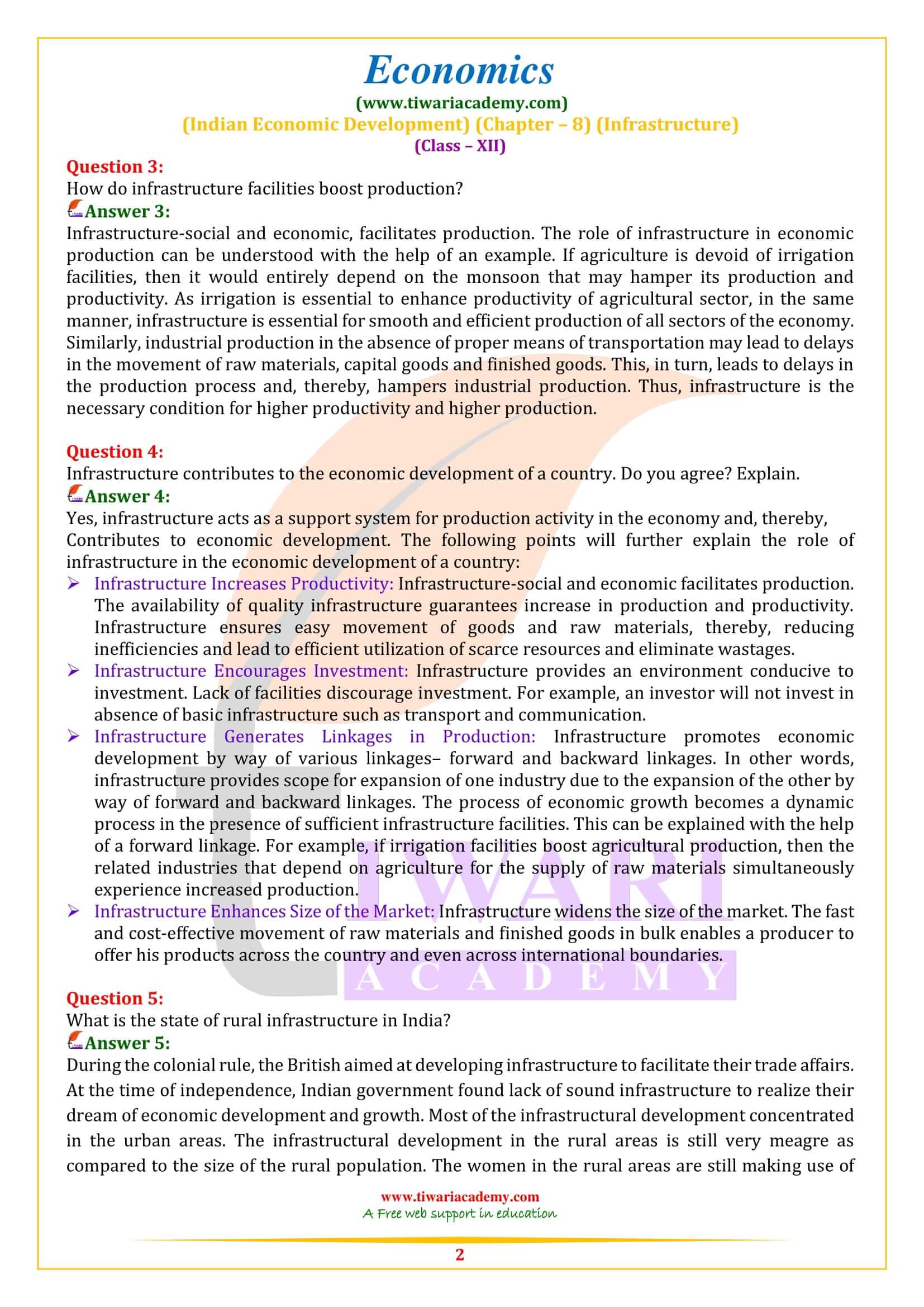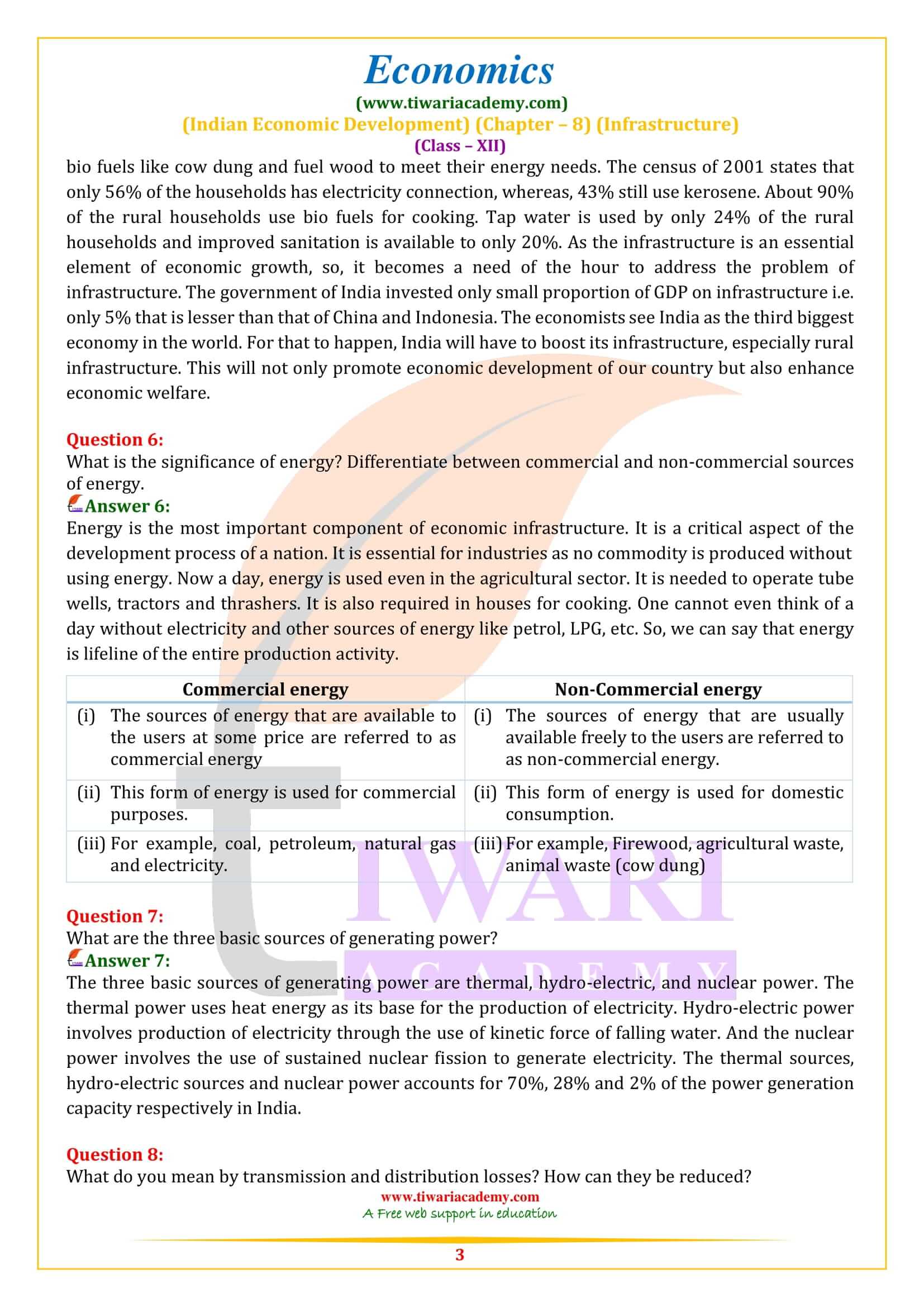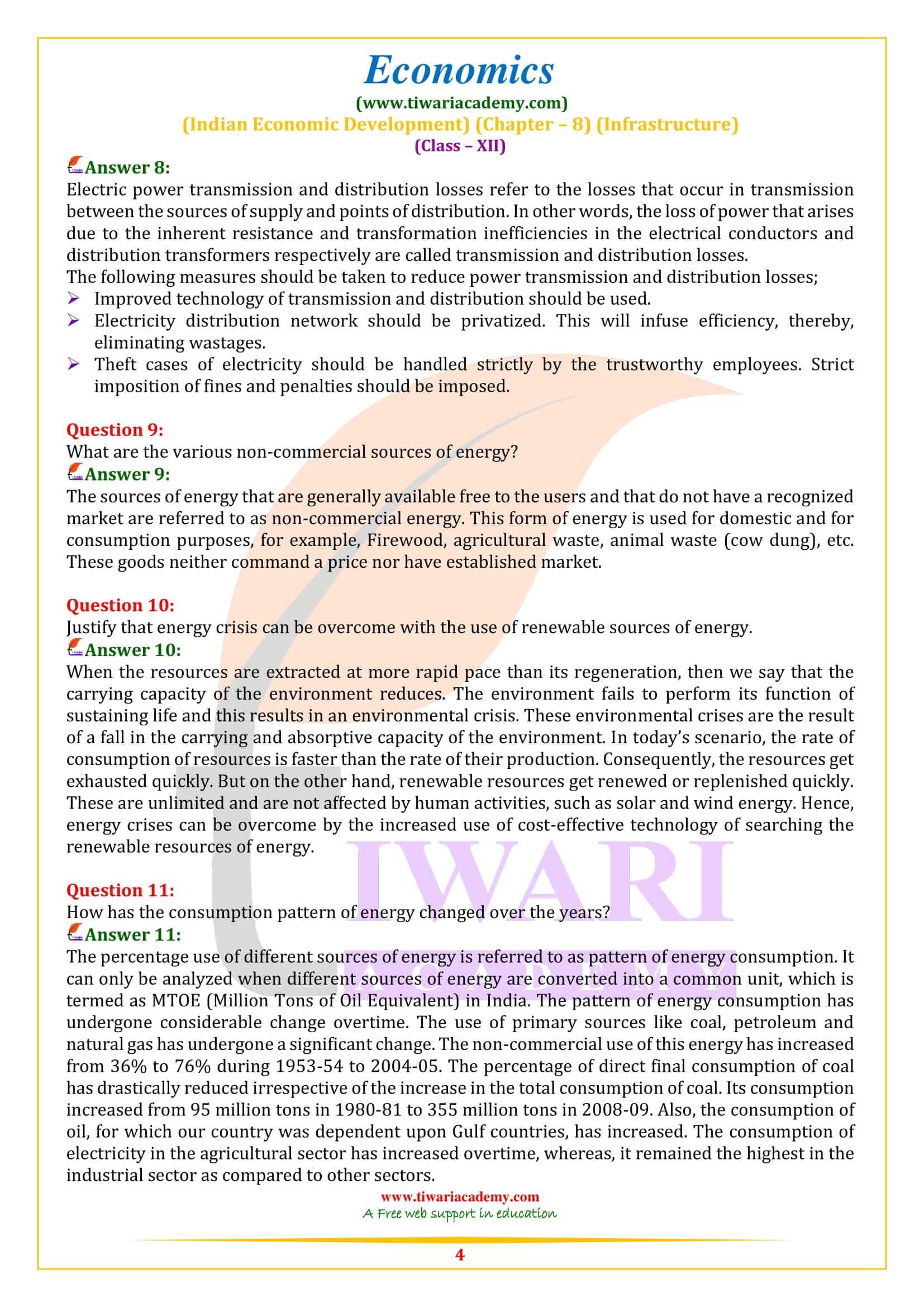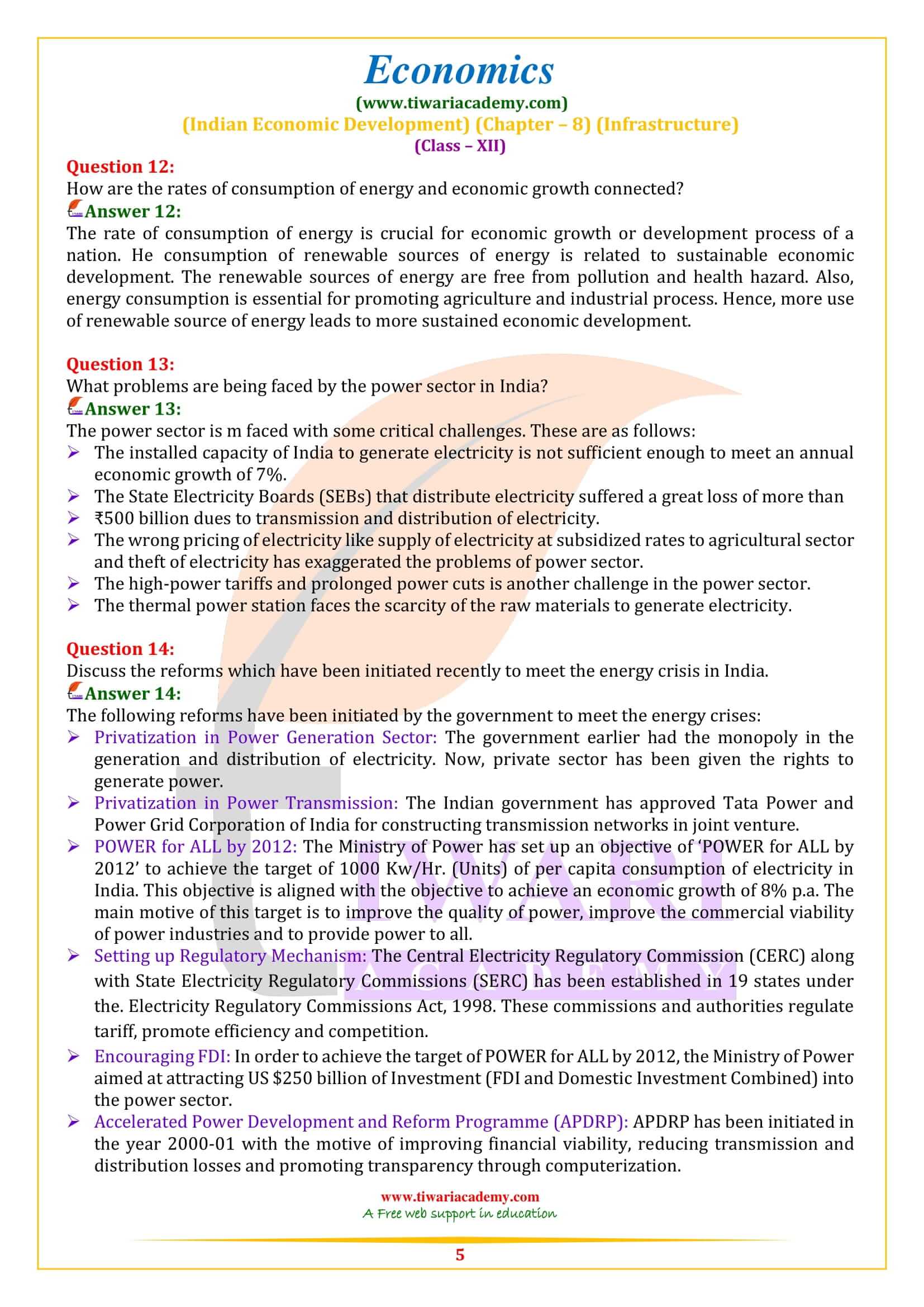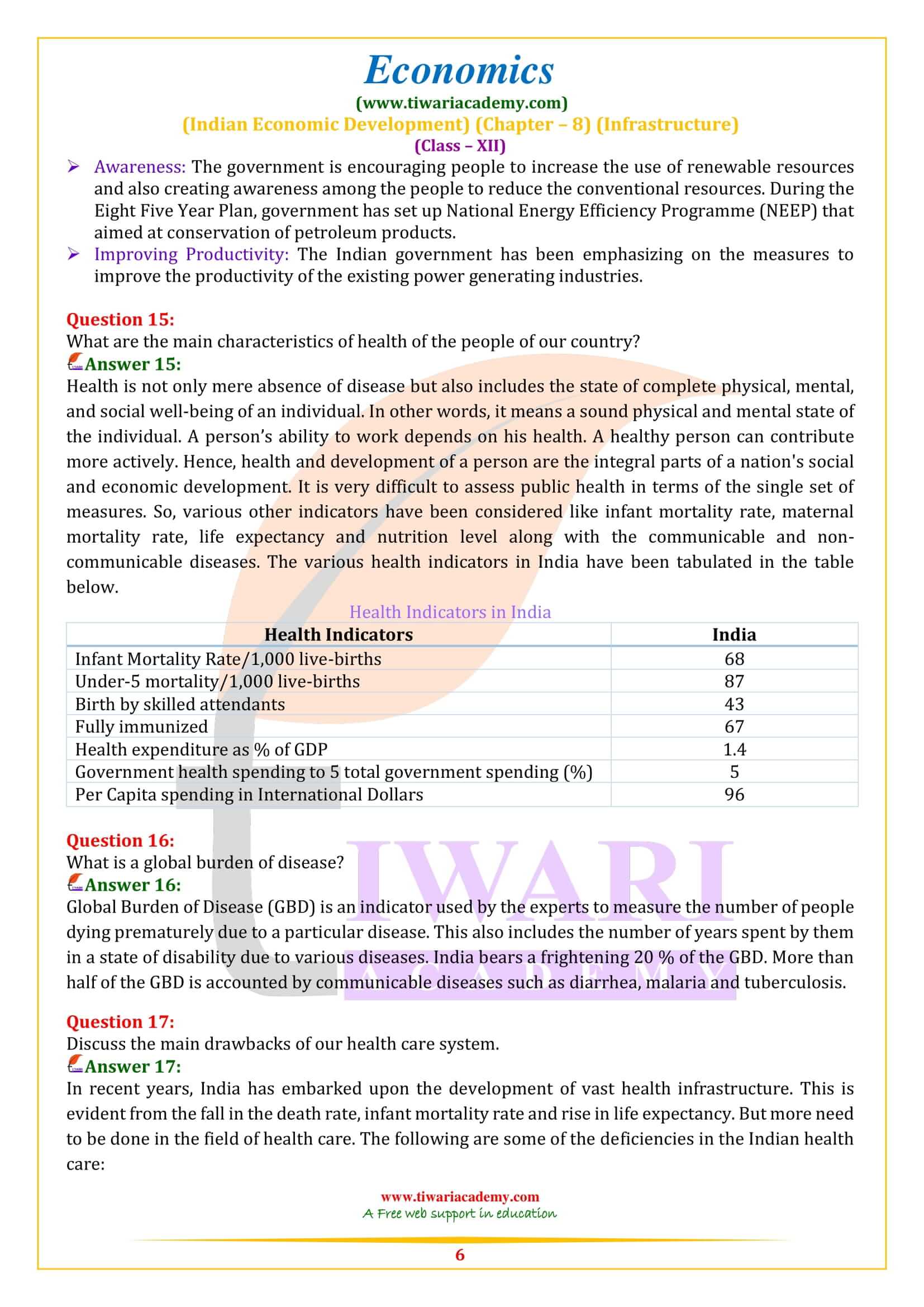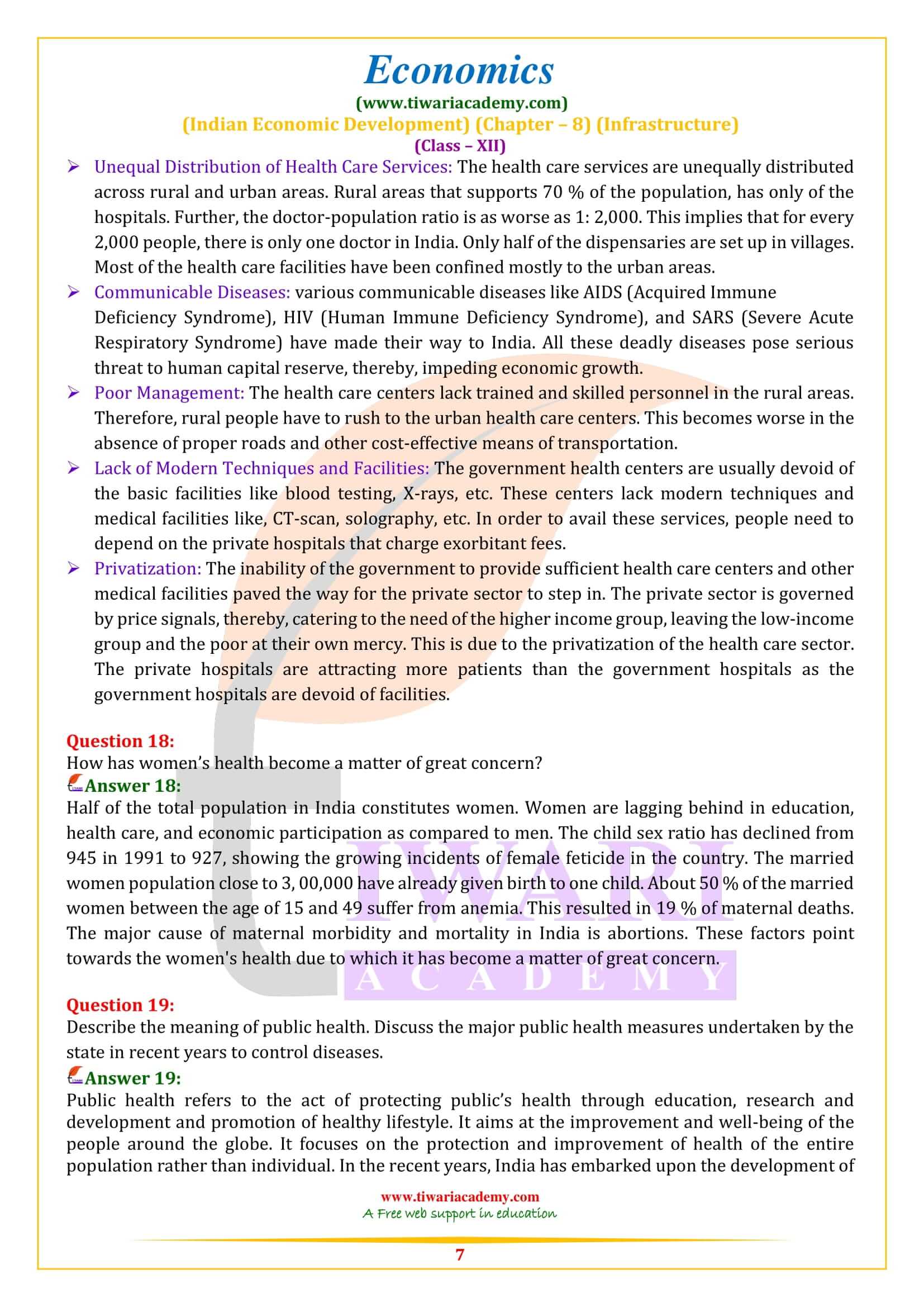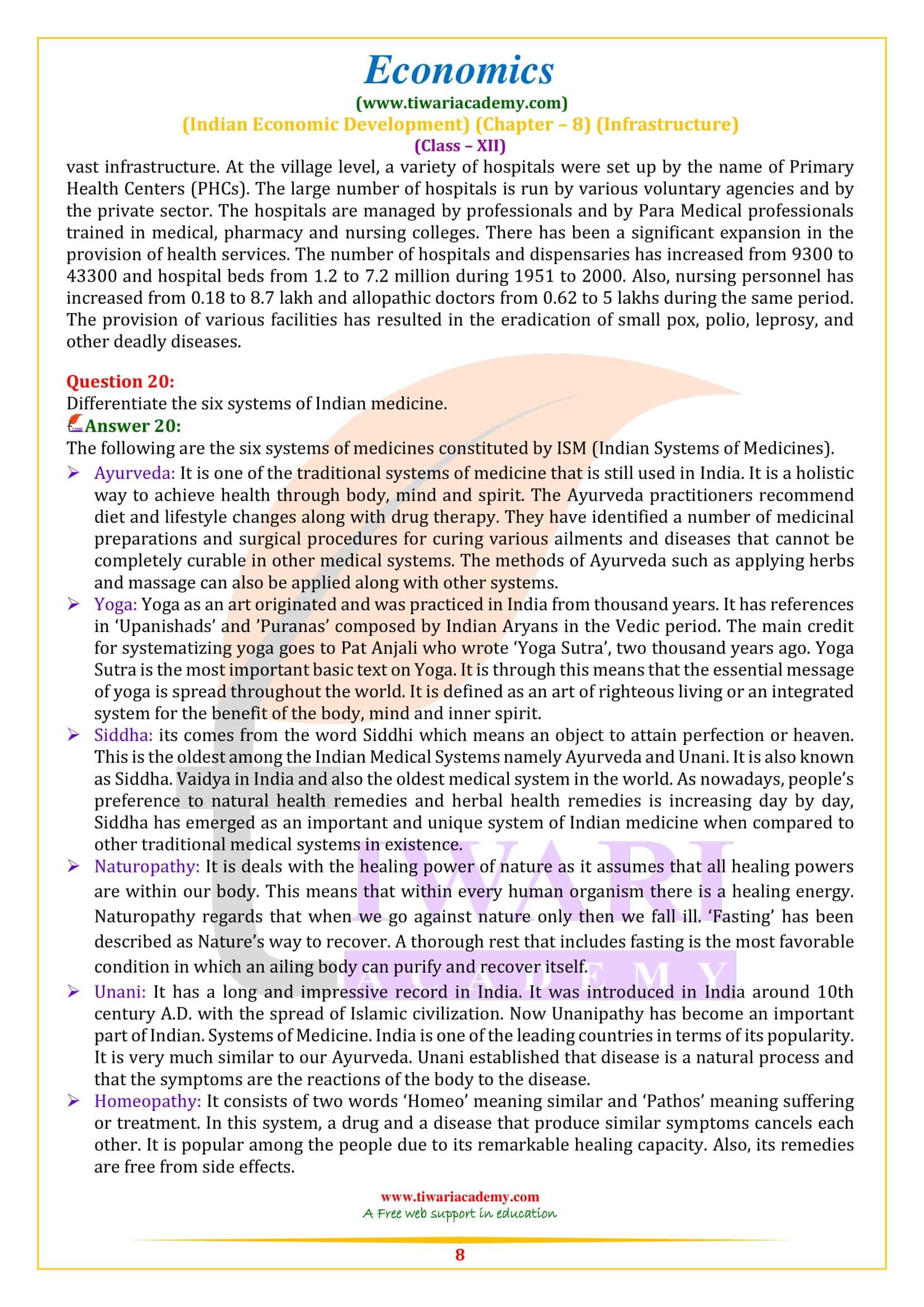NCERT Solutions for Class 12 Indian Economic Development Chapter 8 Infrastructure in English and Hindi Medium updated for CBSE and State board session 2025-26. All the exercises and extra important questions of class 12 Economics chapter 8 are given here with MCQ answers.
Class 12 Indian Economic Development Chapter 8 Question Answers
Infrastructure and its Relevance
Infrastructure provides supporting services in the main areas of commercial and agricultural production, domestic and foreign trade and commerce. These services embrace roads, railways, ports, airports, dams, power stations, oil and gas pipelines, telecommunication facilities, the country’s academic system as well as faculties, health system as well as hospitals, hygienic system as well as clean drinking water facilities and also the monetary system as well banks, insurance and alternative monetary establishments.
Infrastructure as a form of development
A number of these facilities have an immediate impact on production of products and services whereas others provide indirect support by building the social sector of the economy. Some divide infrastructure into 2 categories- economic and social. Infrastructure related to energy, transportation and communication are enclosed within the former class whereas those associated with education, health and housing are enclosed within the latter.
Infrastructure is that the network on that depends the economical operating of a contemporary industrial economy. Trendy agriculture additionally for the most part depends thereon for Infrastructure contributes to economic development of a rustic each by increasing the productivity of the factors of production and up the standard of life of its individuals.
Deterioration the production
Inadequate infrastructure will have multiple adverse effects on health. Enhancements in water supply and sanitation have an outsized impact by reducing morbidity (meaning disposition to fall ill) from major waterborne sickness and reducing the severity of disease once it happens. Additionally, to the apparent linkage between water and sanitation and health, the standard of transport and communication infrastructure will have an effect on access to health care. Pollution and safety hazards connected to transportation additionally have an effect on morbidity, notably in densely populated areas.
The State of Infrastructure in India
Traditionally, the govt has been exclusively accountable for developing the country’s infrastructure. However, it had been found that the government’s investment in infrastructure was inadequate. Today, the non-public sector by itself and additionally in joint partnership with the general public sector, has started enjoying an awfully necessary role in infrastructure development. A majority of our folks live in rural areas. Despite most technical progress within the world, rural ladies are still using bio-fuels like crop residues, dung and fuel wood to satisfy their energy demand. They walk long distances to fetch fuel, water and alternate basic wants.
Supplying the new Energy demand
The census 2011 shows that in rural India solely 56 percent households have associate electricity affiliation and 43 percent still use fuel. Regarding 85 percent of the agricultural households use bio-fuels for cooking. Tap water availability is restricted to solely 31 percent rural households. Regarding 69 percent of the population drinks water from open sources like wells, tanks, ponds, lakes, rivers, canals, etc. Access to improved sanitation in rural areas was solely 30 percent. Although it’s wide understood that infrastructure is that the foundation of development, India is nonetheless to come to life to the decision. India invests solely 30 per cent of its Gross Domestic Product on infrastructure, that is much below that of China and Indonesia.
Rising as new Economic Power
Some economists have projected that India can become the third biggest economy within the world many decades from right now. For that to happen, India will get to boost its infrastructure investment. In any country, as the financial gain rises, the composition of infrastructure needs changes considerably. For low-income countries, basic infrastructure services, like irrigation, transport and power, are additionally necessary. As economies mature and most of their basic consumption demands are met, the share of agriculture within the economy shrinks and additional service-related infrastructure is needed. This is why, the share of power and telecommunication infrastructure is larger in high-income countries.
Sources of Energy and Non-conventional Sources of Energy
Why will we would like energy? In what forms is it available? Energy may be a critical side of the event method of a nation. It is, of course, essential for industries. Currently it’s used on an oversized scale in agriculture and connected areas like production and transportation of fertilisers, pesticides and farm instrumentality. It’s needed in homes for cooking, household lighting and heating. Can you think of producing a commodity or service without using energy?
Some conventional sources of energy
Sources of Energy: There are industrial and non-commercial sources of energy. Industrial sources are coal, crude oil and electricity as they’re bought and sold. Non-commercial sources of energy are fuel-wood, agricultural waste and dried dung. These are non-commercial as they’re not present within the market on an oversized scale. Whereas industrial sources of energy are typically exhaustible (with the exception of hydro-power), non-commercial sources or ancient are typically renewable. Over 60 percent of Indian households depend upon ancient sources of energy for meeting their regular cooking and heating desires.
Understanding the need of newer sources
Non-conventional Sources of Energy: Each industrial and non-commercial sources of energy is called as typical sources of energy. There are 3 different sources of energy that are ordinarily termed as non-conventional sources: solar power, wind energy and periodic event. Being a tropical country, India has nearly unlimited potential for manufacturing all 3 types of energy if some acceptable co-efficient technologies are used. Even cheaper technologies may be developed.
What are the four most important question in chapter 8 of 12th Economics from examination point of view?
The most important questions are as follows:
- Meaning and importance of infrastructure.
- Significance of energy, healthcare system and electricity as part of infrastructure.
- Challenges being faced by the power sector.
- Non- commercial sources of energy.
Can fill in the blanks type of questions be asked in the exams from chapter 8 of 12th Economics?
In recent years lot many changes have taken place in the examination pattern conducted by CBSE Board. Unless the Board issues sample papers- which they normally release around November, December nothing can be said. However, in the past question carrying 1 mark have been asked.
Does the term Infrastructure has the same meaning wherever used in Economics class 12th?
Generally, yes. However, infrastructure used in broader sense refers to basic facilities like power in telecom roads and flyovers, healthcare system, Banking system etc. However, for a school the amenities like sports facilities, science laboratories, Library constitute its infrastructure.
